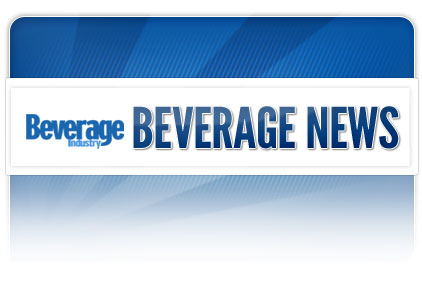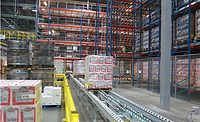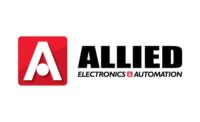What is a warehouse? It sounds like a silly question at first, but posing and answering this question will help operations managers better understand the role of automation in their warehouses. Is the warehouse just a big storage closet? If that’s only how you think of it, then this exercise will be very useful.
A well-planned and managed warehouse can be a critical part of the supply chain. The tools utilized can make operations more efficient, and saving money can offer a competitive advantage.
A warehouse usually is constructed to make distribution more efficient. With a little bit of planning, it can be quite efficient at shipping and receiving. On a small scale, workers with forklifts often are capable of getting the job done. But what about the more sophisticated levels of automation required in today’s expansive distribution networks?
Automation, in fact, has many levels. The real goal of automation is to maximize the efficiency of a large and complex system. One way to reveal the potential of your warehouse is to ask: How can I eliminate complexity?
The beverage industry in particular is feeling the compound stress of SKU proliferation, more complicated orders, higher handling costs, more demanding accuracy expectations, and the baseline need for speed. These are factors where higher levels of automation are the most helpful. Storage and retrieval systems, case-picking products and automatic palletizers are powerful tools in modern warehouses.
However, a huge scale isn’t a requirement. Operations managers can see a quick return-on-investment (ROI) with customized implementation, and adding up the many residual benefits and capabilities can make the case for automation even more compelling.
Although it’s arguable that every warehouse can benefit from increasing its level of automation, three particular scenarios are the most pressing “when” times: when you’re poised for rapid growth; when you’re stretching yourself — and your warehouse — too thin; and when you’re planning cost savings for the long term.
Poised for growth
Of course, hindsight is 20/20, and you never know for sure if you’re poised or not. In retrospect, the Jupiter, Fla.-based JJ Taylor beer distributor couldn’t have anticipated the SKU proliferation trend in beverages more perfectly. In 2004, JJ Taylor installed one of the first automated case-picking systems in the North American beer distributing industry. At the time, 250 product SKUs seemed like a lot — maybe too many — and expanding that number was long resisted. However, the company felt it was time to bolster the company’s SKU capacity and explore the potential savings associated with automation.
After significant diligence and business case development, JJ Taylor chose ITW Warehouse Automation’s (ITWWA) Vertique case-picking solution for its operation in Tampa. The scalability of the Vertique system was one of the critical factors in the company’s selection criteria. Little did the company know how fortuitous its automation decision would be with the rapid growth of SKUs — and its business. The original system was designed to accommodate as many as 275 SKUs. Today, the Vertique system supports more than 1,200 active SKUs at JJ Taylor.
Before system stress overtakes current operation capabilities and you’re scrambling to find solutions, put together a plan to respond to market demands. Make sure the system has enough flexibility and expandability — and the software to integrate with warehouse management — to adapt to changing market demands and accommodate future growth.
Stretching yourself thin
Planning ahead is critical in warehouse management because the difference between investing in more warehouse space and maximizing current space can be substantial. Or, if you have the opportunity to consolidate multiple facilities or distribution centers, choosing wisely is complicated in this age of diversification, fragmentation and shifting market demands.
Warehouses offer the advantages of inventory centralization, but it can be a difficult compromise between consolidation and diversification. Automated storage and retrieval systems (AS/RS) can help in a number of ways. An AS/RS can store high volumes of product at the highest density possible per warehouse square foot.
In this way, companies can hold off investing in more warehouse space while increasing the efficiency of their current spaces. If purchasing more space is a necessity, companies can ensure they maximize storage capacity from the start. Solutions like ITWWA’s StorFast cart-based AS/RS can help make the most of the allotted space regardless of whether it’s an existing, “brownfield,” warehouse or a new, “greenfield,” facility. The cart-based AS/RS maximizes storage capacity with higher density and throughput than traditional crane-based systems. StorFast designs also are modular and can be easily expanded as capacity requirements and SKUs increase.
In addition, AS/RS further makes mixed pallets a reality for both storage in the warehouse and deliveries going out the door. This usually results in increased throughput and reduced labor costs, among other “residual” efficiencies.
Often-overlooked residual efficiencies include distribution after the pallet or shipment leaves the warehouse. An AS/RS enables “picked-to-order” or “picked-to-stop” pallets that make delivery stops shorter so the driver can make more stops per hour or spend that time in customer relations. An AS/RS implementation also increases accuracy rates of shipments, which prevent special single-delivery trips.
Long-term savings
With the right solutions and planning, a warehouse can be a product and inventory manager, a dynamic process enabler, a key factor in rationalizing new SKUs, a sales growth catalyst, a business planning tool, and a flexible entity that adapts to new market forces as they arise. But the bottom-line growth comes from effectiveness married with efficiency.
So, when is the right time to invest in automation systems? Of course, volume is a critical factor. If a company is moving 7-15 million cases a year, there are many compelling reasons to automate at the highest level. However, smaller facilities also have had great success when implementing systems using different levels of automation.
The more pressing question might be: How fast can I see an ROI? Automation implementations can cut some costs, like labor, immediately. Yet many factors should be considered when calculating a reasonable ROI timeframe. Admittedly, implementation can take time and disrupt current operations to a degree. That can be factored in, along with gains from enablers and partners, changes to delivery routes, new revenue strategies, and reduced stress on personnel. Other residual benefits that also can tip the ROI scale are increased inventory visibility, reduced product and packaging damage, and energy use savings.
Compare apples to apples
Although the benefits and potential ROI of warehouse automation are clearly there, many myths, or misconceptions, about automation still exist. Many reluctant distribution managers immediately imagine comprehensive, large-scale implementations that require a taxing investment of time and energy to put into place. Before looking at the costs involved, most feel like they can’t afford even thinking about automation because they believe the systems are “all-or-nothing” propositions. That is hardly the case. There are numerous entry levels and scalable systems offered in the market today.
Another misconception is that most automation systems are inflexible or “one-size-fits-all.” In fact, every installation is customized to the specific needs inside each warehouse. Fully automated systems might not be for everyone and, in fact, semi-automated installations can often provide more flexibility and efficiency for some warehouse operators.
It’s also critical to separate systems that are automated in name only and not fully integrated systems. When comparing costs, make sure to itemize all the systems involved to ensure accurate comparisons are being made. One might get confused when shopping around for warehouse automation solutions, where prices range from $300,000 systems to some exceeding $1 million. Closer inspection might reveal that lower-priced options are not true automation systems, and there might be variations on voice-picking automation, for instance.
An example of a successful semi-automated implementation is Straub Distributing, a beverage wholesaler in Tustin, Calif. The flexibility and scalability of the semi-automated Vertique case-picking system enabled Straub to meet its stringent ROI hurdles, whereas a fully automated system might not have had both flexibility and a quick payback schedule. The Straub installation utilizes semi-automatic towers that are loaded manually, which minimizes system costs. Palletization and case mixing, though, are automated. The simplicity of the Vertique system was another key factor in the company’s choice, which did not require hiring high-priced programming specialists.
When asked why Straub chose ITWWA’s Vertique instead of other case-picking solutions, Rick Sweeney, Straub’s executive vice president, didn’t hesitate to answer. “That’s easy,” he said. “Without Vertique, we would have gone without any sort of automation.” The scalability of the Vertique system, and ITWWA’s extensive experience, ultimately drove Sweeney to purchase the solution.
Plan to automate
Deciding when or how to automate a warehouse can be an overwhelming task. Although ROI turnarounds in three years are not unheard of, they are most successful when warehouse operators take a considered, flexible approach. It’s better to be planning ahead for changing market demands than trying to catch up after the fact.
Total volumes, the number of SKUs, the need for mixed-case pallets, and the better management of inventory are each good reasons to invest in warehouse automation. But most often, all of these are slices of the same warehouse management pie.
It’s never too soon to look at your particular warehouse automation situation more closely. It might be reassuring if it turns out that it’s too soon to invest. But that knowledge is valuable as well. At least you’ll have a plan of action ready when the time is right.
Paths of least resistance
Automating one’s warehouse operations can seem daunting. When faced with expansion, adding manual labor or expanding into a new building can seem like the easiest paths. However, these paths are probably not the most efficient or the most profitable. For a direct impact on your bottom line, there are a number of scenarios in which you might benefit quickly from warehouse automation. Consider the following questions for reflection: Are you operating out of an existing building and need to maximize storage?
Are you developing a new building and want to optimize storage and efficiency from the start?
Are you consolidating multiple facilities or distribution centers into one central location?
Are you acquiring multiple distribution centers?
Are you looking to increase throughput while simultaneously reducing labor costs?
Is SKU proliferation negatively impacting your productivity?
Is shipping diversification eating up your storage capacity?
If you answer yes to any of these questions, then it’s time for an assessment of your operation.



